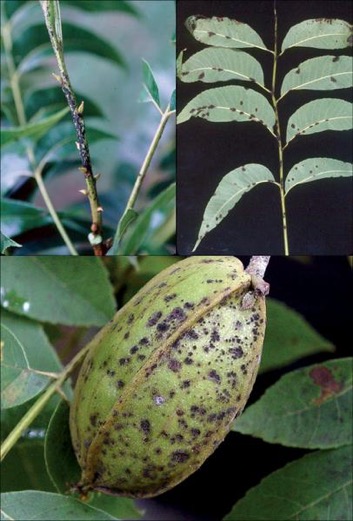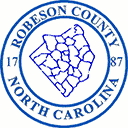Pecan Scab
go.ncsu.edu/readext?740636
en Español / em Português
El inglés es el idioma de control de esta página. En la medida en que haya algún conflicto entre la traducción al inglés y la traducción, el inglés prevalece.
Al hacer clic en el enlace de traducción se activa un servicio de traducción gratuito para convertir la página al español. Al igual que con cualquier traducción por Internet, la conversión no es sensible al contexto y puede que no traduzca el texto en su significado original. NC State Extension no garantiza la exactitud del texto traducido. Por favor, tenga en cuenta que algunas aplicaciones y/o servicios pueden no funcionar como se espera cuando se traducen.
Português
Inglês é o idioma de controle desta página. Na medida que haja algum conflito entre o texto original em Inglês e a tradução, o Inglês prevalece.
Ao clicar no link de tradução, um serviço gratuito de tradução será ativado para converter a página para o Português. Como em qualquer tradução pela internet, a conversão não é sensivel ao contexto e pode não ocorrer a tradução para o significado orginal. O serviço de Extensão da Carolina do Norte (NC State Extension) não garante a exatidão do texto traduzido. Por favor, observe que algumas funções ou serviços podem não funcionar como esperado após a tradução.
English
English is the controlling language of this page. To the extent there is any conflict between the English text and the translation, English controls.
Clicking on the translation link activates a free translation service to convert the page to Spanish. As with any Internet translation, the conversion is not context-sensitive and may not translate the text to its original meaning. NC State Extension does not guarantee the accuracy of the translated text. Please note that some applications and/or services may not function as expected when translated.
Collapse ▲Writing an article can present a daunting task when you are undecided on the topic. But then, once in a while, the question is clearly answered for you – the case in point, this time. When most of your requested home visits are addressing pecan trees, and half of the office calls are inquiring about pecan trees, I feel pretty confident there are even more folks in the county who may have questions about our wonderful, native nut-bearing tree.
Often times we are fortunate to harvest a pretty good crop of pecans with little effort or maintenance to our trees. Even left alone, most of our older varieties will produce a fair crop every other year. I recall Dr. Mike Parker, North Carolina Cooperative Extension Specialist, encouraging local growers at the North Carolina Pecan Growers Association annual meeting this past February that we should expect a bumper crop this year. Unfortunately, we have had two recent crop failures due to extreme weather conditions. Actually, this year’s temperatures have been fairly decent but the rain – oh my gracious, the ongoing rain – rain on top of rain, and then it rained again! Sadly, the average homeowner can kiss the anticipated bumper crop goodbye for this year thanks to the pronounced wet and humid growing season.
Environmental conditions have been very conducive for fungal infections to thrive, causing many folks to call the office asking: Why is my tree losing leaves so early? Why are the nuts not developing and dropping early? Why are the nuts black? and What is wrong with the foliage on my tree?
Scab is the common name and Cladosporium caryigenum is the fungal pathogen causing the destruction. Pecan Scab occurs on leaves, twigs, and nut shucks. Plant tissues are most susceptible when young and actively growing. Lesions usually begin as a small black spot, just 1 to 8 millimeters in size. These lesions may enlarge and coalesce, or come together, enveloping the entire leaflet and causing the leaflet to dry up and fall early. Scab frequently infects the shuck, which is the soft tissue surrounding the developing pecan. This infection causes the pecan to stop developing; the shuck will turn black and the nut will fall off the tree prematurely. This point of infection causes the heaviest loss in yield. Below are images of scab.

Control in a commercial orchard includes a vigorous spray schedule with fungicides to help reduce the rate of Scab infection, but the typical homeowner does not have the necessary equipment to spray a fungicide in the canopy of a 50-foot tall tree. The homeowner’s best management practice relies on sanitation. Once winter starts and all the leaves have fallen, this is the best time to clean up the ground beneath your pecan tree. Remove all leaves, pecans, pecan shucks, and limbs that have fallen. The fungus overwinters in all this material and the following spring, when temperatures warm up and the rains comes, new fungal spores will be released and new infections will occur.
For more information, contact Mack Johnson, Extension Horticultural Agent, at 910-671-3276, by email at mack_johnson@ncsu.edu, or visit our website.




